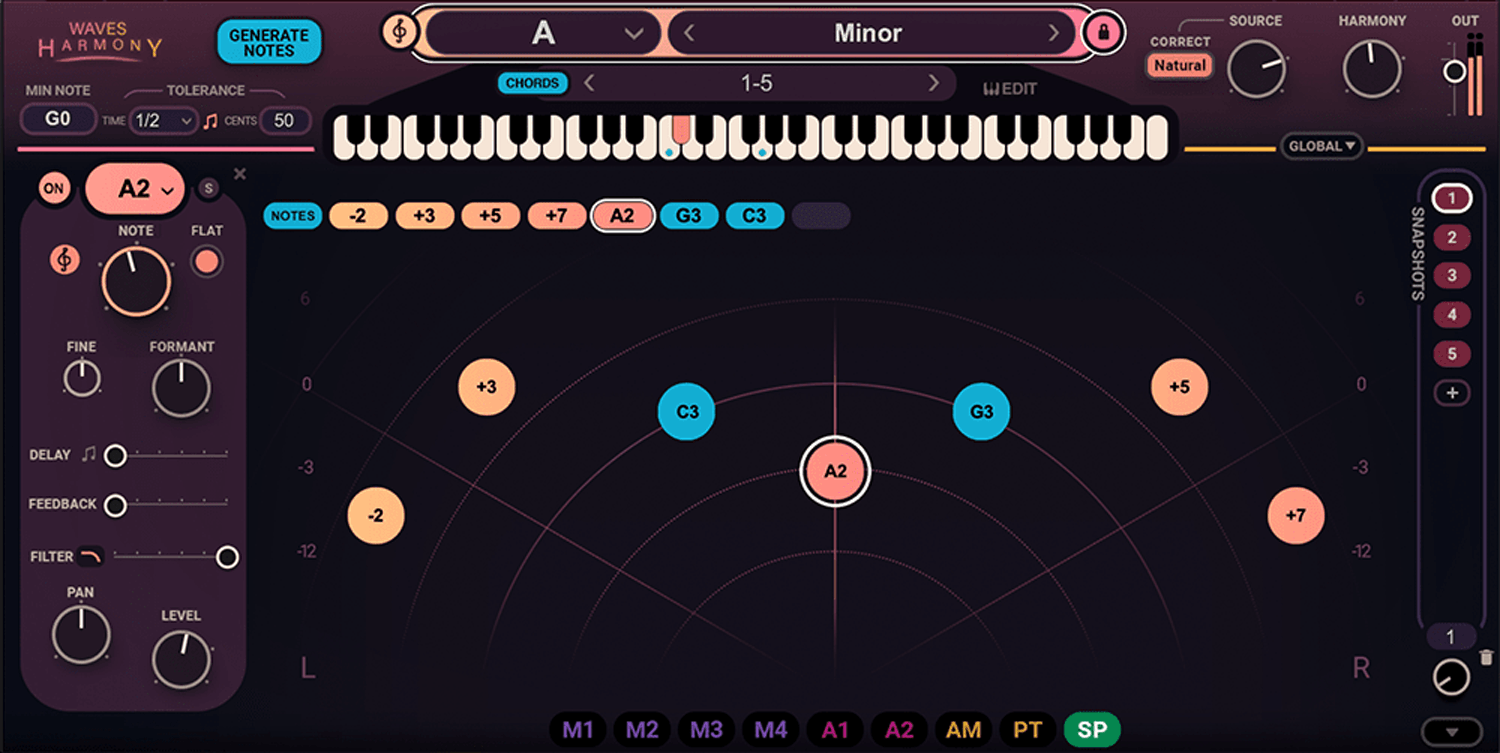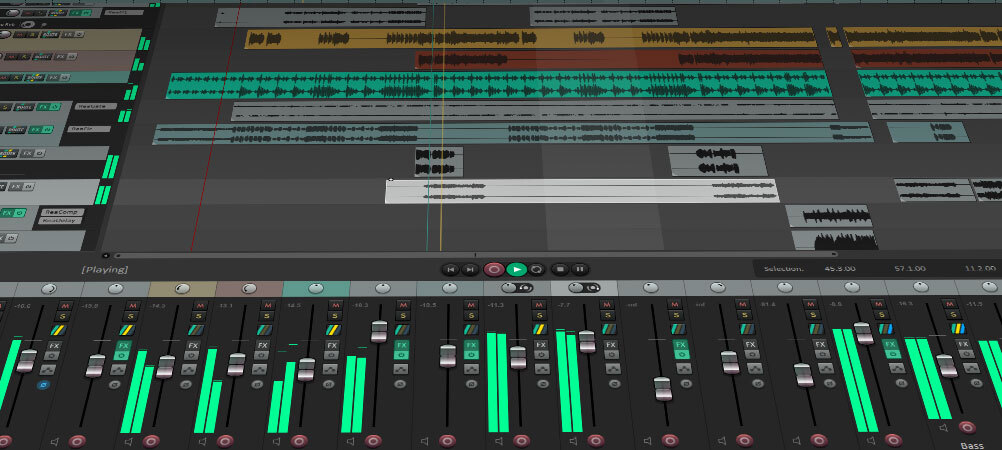To use VST plugins in Reaper, simply locate the VST plugins folder in Reaper’s preferences and add the path. Reaper is a powerful digital audio workstation that allows users to enhance their music production with the use of VST plugins.
VST plugins are additional instruments or effects that can be integrated into your digital audio workstation to expand its functionality and creativity. By following a few simple steps, you can easily incorporate VST plugins into Reaper and take your music productions to the next level.
We will discuss how to seamlessly use VST plugins in Reaper, making your music production process more efficient and enjoyable. Let’s dive in and explore the world of VST plugins within the Reaper environment.

Credit: www.uaudio.com
Choosing The Right Vst Plugins
When working with VST plugins in Reaper, selecting the right ones is crucial for achieving the desired sound and performance. Here’s how you can make informed decisions:
Researching Options
Before diving in, research various VST plugins available. Look for reviews and recommendations from reputable sources.
Understanding Compatibility
Check compatibility of the VST plugins with Reaper. Ensure they are designed to work seamlessly with your specific version.

Credit: www.waves.com
Optimizing Vst Plugin Workflow
Enhance your workflow in using VST plugins in Reaper with effective optimization techniques. Streamline your creative process and increase productivity by organizing plugins, creating custom shortcuts, and utilizing plugin presets. Elevate your music production experience and achieve seamless integration of VST plugins in Reaper.
Organizing Plugins In Reaper
In Reaper, create folders to group similar VST plugins for easier access.Utilizing Custom Templates
Develop custom templates in Reaper with frequently used plugins preset for quick workflow.Exploring Advanced Vst Techniques
Exploring Advanced VST Techniques can take your music production to the next level. Unlocking the full potential of VST plugins in Reaper allows for creative and innovative sound design. In this guide, we will delve into advanced techniques for utilizing VST plugins, including Utilizing Automation and Incorporating MIDI Control.
Utilizing Automation
Automation is a powerful tool when using VST plugins in Reaper. It enables you to dynamically adjust parameters over time, creating movement and depth in your music. To automate VST parameters in Reaper:
- Select the VST plugin you want to automate
- Create an automation lane for the desired parameter
- Draw or record automation data to control the parameter’s changes
Incorporating Midi Control
MIDI control offers precise manipulation of VST plugins, allowing for real-time interaction and expression. To incorporate MIDI control with VST plugins in Reaper:
- Connect your MIDI controller to Reaper
- Assign MIDI CC messages to control VST parameters
- Record or manually adjust the MIDI data to modulate the VST plugin’s settings

Credit: www.reaper.fm
Troubleshooting Vst Plugin Issues
Struggling with VST plugin issues in Reaper? Follow simple steps to troubleshoot and enhance your music production experience effortlessly. Resolve compatibility and installation problems swiftly for smooth operation.
Dealing With Latency Problems
If you encounter latency issues while using VST plugins in Reaper, it can be quite frustrating. Latency refers to the delay between pressing a key or starting audio playback and hearing the sound. Here are a few steps you can take to troubleshoot and resolve latency problems:
- Update your audio drivers: Outdated audio drivers can be a common cause of latency issues. Check the manufacturer’s website for the latest driver updates and install them accordingly.
- Adjust your buffer size: Increasing the buffer size can help reduce latency. Experiment with different buffer settings until you find a balance between low latency and stable performance.
- Disable unnecessary plugins: Running too many plugins simultaneously can strain your system resources, leading to increased latency. Disable any plugins that you are not currently using to free up CPU power.
- Optimize your system: Close any unnecessary background programs or processes that may be consuming CPU power. Disable any power-saving settings that could limit the performance of your computer.
Managing Cpu Overload
Another common issue when using VST plugins in Reaper is the dreaded CPU overload. When this happens, your system becomes overwhelmed, causing audio dropouts and glitches. Here are some practical tips to help you manage CPU overload:
- Reduce plugin instances: Using fewer instances of resource-intensive plugins can help alleviate CPU strain. Consider consolidating multiple instances into a single instance or finding alternative plugins with lower CPU usage.
- Freeze or render tracks: Freezing or rendering tracks with heavy plugin usage can help reduce CPU load. This process bounces the tracks to audio files, allowing you to disable the plugin processing and lighten the CPU load.
- Use offline rendering: If you’re working on a complex project with many plugins and virtual instruments, consider using offline rendering to bounce the tracks in real-time. This enables you to use the final audio files instead of real-time processing, reducing CPU usage significantly.
- Upgrade your hardware: If you frequently encounter CPU overload despite optimizing your settings, it may be time to consider upgrading your computer’s hardware. Increasing your RAM, upgrading your processor, or using an external DSP (Digital Signal Processor) can help handle heavier plugin loads.
By following these troubleshooting steps, you can effectively overcome latency problems and manage CPU overload when using VST plugins in Reaper. Remember to regularly update your plugins and keep your system optimized for the best possible performance.
Utilizing Vst Plugins For Creative Effects
When it comes to audio production, utilizing VST plugins can take your music to new creative heights. Reaper is a powerful digital audio workstation that allows you to use these plugins to enhance and shape your music in exciting ways. In this article, we will explore how you can use VST plugins in Reaper to create unique soundscapes and experiment with signal processing for awe-inspiring creative effects.
Creating Unique Soundscapes
One of the most exciting aspects of using VST plugins in Reaper is the ability to create unique soundscapes. Soundscapes are immersive sonic environments that transport listeners to different places and emotions. With VST plugins, you can manipulate audio in ways that were once unimaginable, allowing you to craft intricate layers of sound that evoke specific moods and atmospheres.
To start creating a unique soundscape in Reaper, you can:
- Choose a suitable VST plugin that offers a wide range of sound manipulation options.
- Experiment with different effects such as reverbs, delays, and chorus effects to add depth and dimension to your soundscape.
- Layer multiple sounds together, each processed with different VST plugins, to create a rich and dynamic sonic landscape.
- Utilize automation to modulate parameters in real-time, allowing you to create intricate sound movements and evolving textures.
By following these steps, you can unlock endless possibilities for crafting unique and captivating soundscapes.
Experimenting With Signal Processing
In addition to creating soundscapes, another exciting way to use VST plugins in Reaper is to experiment with signal processing. Signal processing involves manipulating the characteristics of audio signals to achieve specific sonic effects. Whether you want to add distortion, filter out frequencies, or apply modulation effects, VST plugins offer a plethora of options for sonic experimentation.
Here are some ways you can experiment with signal processing using VST plugins in Reaper:
- Explore different EQ plugins to shape the tonal balance of your audio, emphasizing certain frequencies or reducing unwanted ones.
- Try out various compressors and limiters to control the dynamics of your tracks, adding punch and clarity.
- Use distortion and saturation plugins to add grit and warmth to your sounds.
- Apply time-based effects like phasers, flangers, and tremolos to create movement and modulation.
By experimenting with different signal processing techniques, you can uncover new and exciting sounds that will add depth and character to your music.
Frequently Asked Questions On How To Use Vst Plugins In Reaper
How Do I Use Vst In Reaper?
To use VST in REAPER, simply drag and drop the VST plugin into the FX chain on a track. Adjust settings as needed.
How Do I Run Vst Plugins?
To run VST plugins, install a digital audio workstation (DAW) and set the plugin folder path. Open the DAW, scan for plugins, then load and use them in your project.
Do Plugins Work With Reaper?
Yes, plugins are compatible with REAPER. They can be used to enhance and extend the functionality of the software for audio processing and effects.
Is Reaper Vst Compatible?
Yes, REAPER is compatible with VST plugins. It supports VST instruments and effects, allowing users to enhance their audio projects with a wide range of third-party plugins.
Conclusion
Using VST plugins in Reaper can greatly enhance your music production. These digital tools offer a wide range of creative possibilities, allowing you to customize your sound and take your music to the next level. With the right techniques and experimentation, you can achieve professional-quality results in your recordings and mixes.
Embracing VST plugins in Reaper opens up a world of endless potential for your music projects.